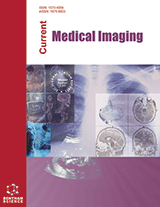
Abstract
Objective: This study aimed to explore the imaging characteristics of patients with pulmonary tuberculosis complicated with pulmonary embolism and analyze the prognosis of the condition, thereby reducing the mortality and misdiagnosis rate of complications in this type of pulmonary tuberculosis.
Methods: In this retrospective study, a total of 70 patients diagnosed with pulmonary embolism by computed tomography pulmonary angiography (CTPA) from January 2016 to May 2021 in Anhui Chest Hospital were included. Among them, 35 patients with pulmonary embolism combined with pulmonary tuberculosis were set as the study group, and the other 35 patients with pulmonary embolism only were set as the control group. The imaging findings of chest CT examination, the incidence of pulmonary hypertension, the level of N-terminal proto-B-type brain natriuretic peptide (NT-proBNP), and the prognosis of patients were compared between the two groups. The incidence of deep venous embolism was evaluated by ultrasonography of the lower extremity.
Results: In the study group, the median age of patients was 71 years, and the ratio of males to females was 2.5 to 1. In the control group, the median age was 66 years old, and the male-to-female ratio was 2.2 to 1. There were 16 cases (16/35, 45.71%) in the study group and 10 cases (10/35, 28.57%) in the control group with an increased level of NT-proBNP. Pulmonary hypertension occurred in 10 patients (10/35, 28.57%) in the study group and 7 patients (7/35, 20.00%) in the control group. Patients who lost follow-up included 5 in the study group (5/35, 14.29%) and 3 in the control group (3/35, 8.57%). There were 17 cases (17/35, 48.57%) in the study group and 3 cases (3/35, 8.57%) in the control group with pulmonary artery widening, and the difference was significant (P < 0.001). There were 13 deaths in the study group (13/35, 37.14%) and 1 death in the control group (1/35, 2.86%), and the difference was significant (P <0.001).
Conclusion: Special signs of pulmonary artery widening, pulmonary hypertension of varying degrees, and increased levels of NT-proBNP of varying degrees can be found in patients with pulmonary tuberculosis complicated with pulmonary embolism, and the three signs are positively correlated. The mortality of patients with pulmonary tuberculosis complicated with pulmonary embolism is significantly higher than that of patients with pulmonary embolism alone. Pulmonary tuberculosis and pulmonary embolism both occur in the ipsilateral lung, causing clinical symptoms to cover each other, thereby making diagnosis difficult.
Keywords: Pulmonary embolism, Pulmonary tuberculosis, Imaging, Poor prognosis, Ipsilateral lung, Proto-B-type.











